Reading Time: 9 mins
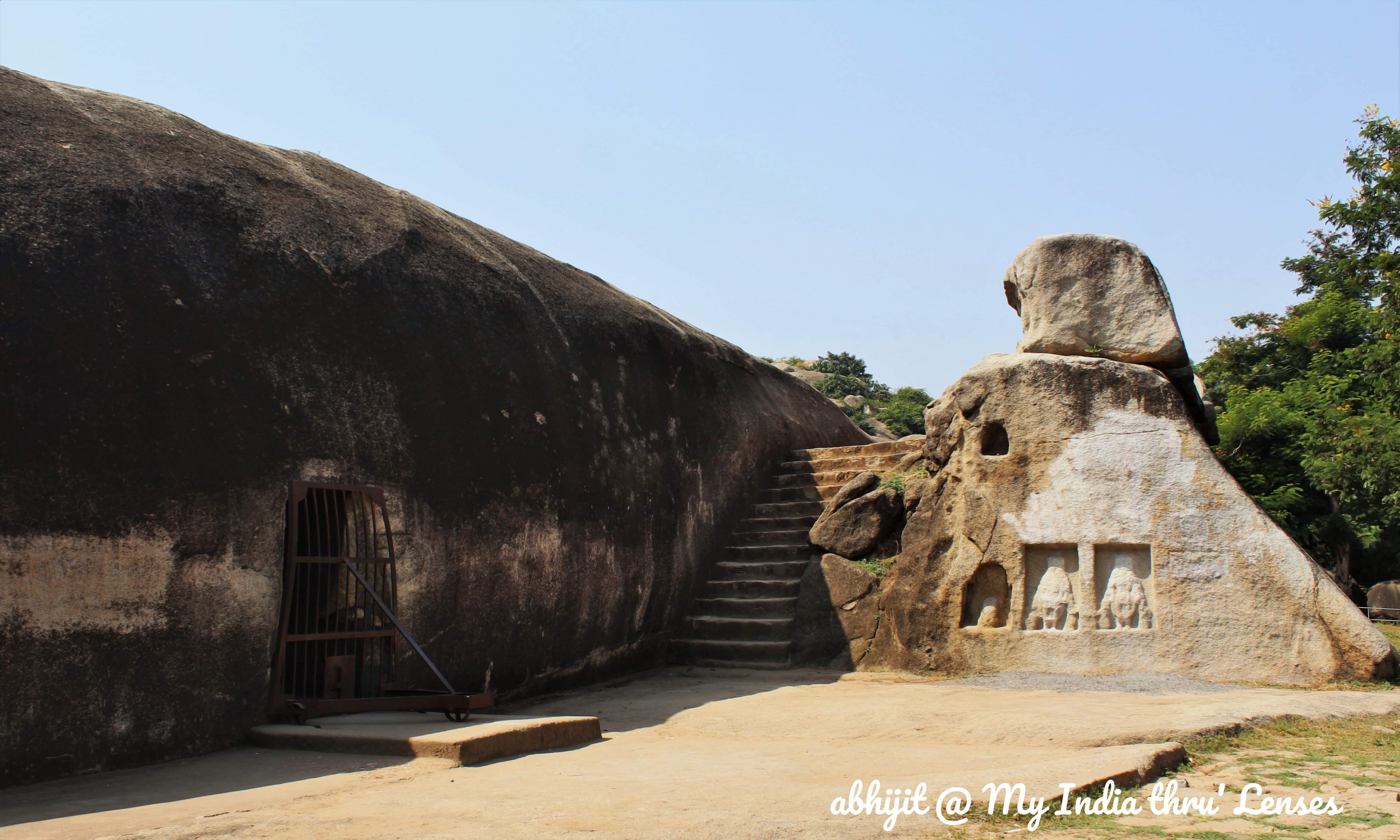
The Barabar Hill Caves, located at a distance of 24 kms from Gaya in the state of Bihar, are among the oldest rock-cut caves in India dating back to 3rd Century BCE. The caves, belonging to the Mauryan era, are mostly devoid of sculptures, but contain rare inscriptions in Brahmi scripts. According to the inscriptions, these caves are the remains of the lost Ajivika sect, as such, some of the caves were dedicated by Emperor Ashoka to the Ajivikas. Contemporary to Buddhist & Jain religions, the Ajivika sect flourished under the patronage of Nanda & Maurya emperors, but after that, had a sharp decline and finally lost due to unknown reasons. The Barabar Hill Caves bear traces of the Mauryan empire, Emperor Ashoka and the lost Ajivika sect.
Chandragupta Maurya, under the guidance of Chanakya, established the Mauryan Empire (322–185 BCE) in Magadha, one of the ‘16 Mahajanapadas’ (‘16 great kingdoms’) in Ancient India. The Empire reached its zenith under Ashoka, the 3rd Emperor of the dynasty, who ruled between 268 – 232 BCE. The Empire was said to have been the largest to ever exist in the Indian subcontinent and enjoyed decades of stability, harmony & peace establishing itself as a formidable power in the continent. Although 2000+ years have passed, substantial influence of this Ancient Empire can be seen in various parts of present India. Great Mauryan stupas are spread across the Indian subcontinent and sites such as Sarnath still stand today. The Lion Capital of Ashoka, the sculpture of 4 Asiatic lions standing back to back, has been adopted as the National Emblem of India.
The capital of this great empire was Pataliputra, modern day Patna. It is thus quite evident that Patna & its surrounding areas in the state of Bihar are treasure troves for historians and archaeologists. The ruins of Nalanda University, the centre of excellence of Ancient India, lies at a distance of approx. 75 kms from Patna. Rajgir (90 kms from Patna) was the capital of ancient state of Magadha before Patliputra i.e. it’s history dates back to Bimbisara and Ajatsatru of Haryanka Dynasty around mid of 6th century BCE (Pre-Mauryan era). Hundreds of pilgrims make their way to Bodh Gaya (120 kms from Patna), heavily influenced by Ashoka, which is the place where Gautama Buddha is said to have attained enlightenment. Not too far from this sacred destination lie the Barabar Hill Caves, which are among the oldest dating rock-cut caves of the Mauryan era containing rare Hindu and Buddhist scriptures.
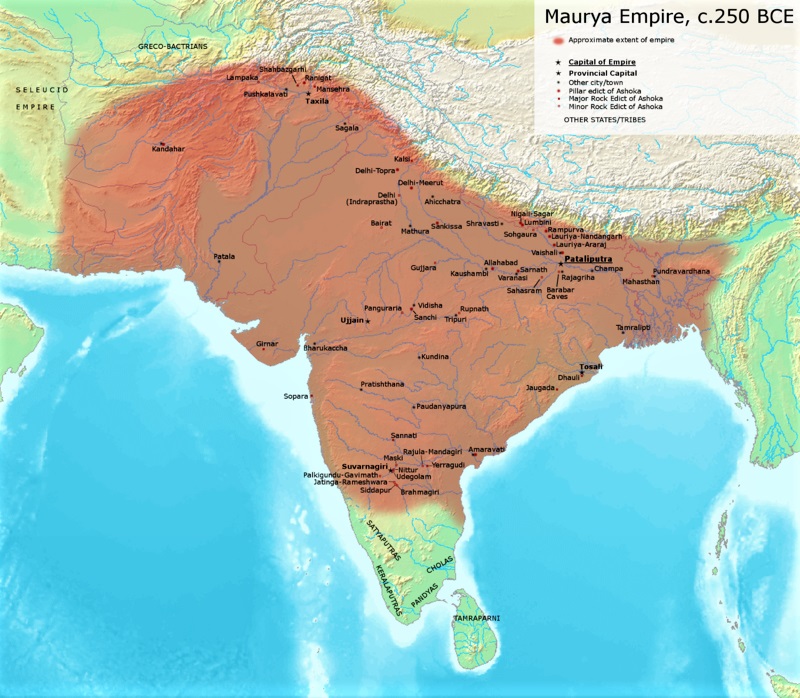
The maximum extent of the Mauryan Empire - At its greatest extent, the empire stretched along the natural boundary of the Himalayas, to the east into Assam, to the west into Baluchistan (southwest Pakistan and southeast Iran) and the Hindu Kush mountains of what is now eastern Afghanistan. It only excluded a small part of South India. (PC- Avantiputra7 - Own work, CC BY-SA 3.0, https://commons.wikimedia.org/w/index.php?curid=33726301)
Rajgir-Nalanda-Bodhgaya trip used to be a very popular trip, especially for the people from the eastern part of India. Until 90’s, it was one of the favourite destinations to travel during the Puja or Winter holidays. In the last two decades, however, this popularity has faded and there is a substantial dent in the number of tourists visiting these places. These are, probably, losing out the race with few other hot destinations that have come up.
Covering up Rajgir, Nalanda & Bodhgaya in the first 2 days, we decided to visit Barabar Caves on the last day of our 3-day Rajgir-Nalanda-Bodhgaya trip. We made our staying arrangements at a resort in Rajgir. The distance of Barabar Hill from Rajgir is about 50 kms, but it took us 1.5 hours due to poor road conditions. By 11.30 am we reached the foot of the Barabar Hill. Our cab driver also accompanied us as he never had a chance to see the caves since not many tourists opt to visit Barabar Hill.
Read more on Nalanda University & suggested itinerary for Rajgir-Nalanda-Bodhgaya trip-> A Trip to Nalanda: The Centre of Excellence in Ancient India
The Barabar Hill has 4 rock-cut caves, viz. Karan Chaupar Cave, Sudama Cave, Lomas Rishi Cave and Vishwakarma Cave, all dating back to 3rd century BCE. There is another hill called Nagarjuni Hill, which has 3 similar caves. So, it’s a set of 7 rock-cut caves on the twin hills of Barabar & Nagarjuni. These caves are carved out of granite and mostly two-chambered with highly polished surfaces, but mostly missing any kind of sculptures. Barabar caves are known for their architecture as these are the very caves which saw the use of the Chaitya Arch in stone for the first time. The inscriptions found in here dates back to the Mauryan period. Also, the Barabar caves are the only remains of the lost Ajivika sect. The inscriptions in Sudama and Lomas Rishi caves tell us that these caves were assigned by Emperor Ashoka to the Ajivika monks. Another inscription of Dasaratha Maurya, the grandson of Ashoka, on the Nagarjuni hill informs that the Ajivikas continued to enjoy imperial Mauryan patronage for long.
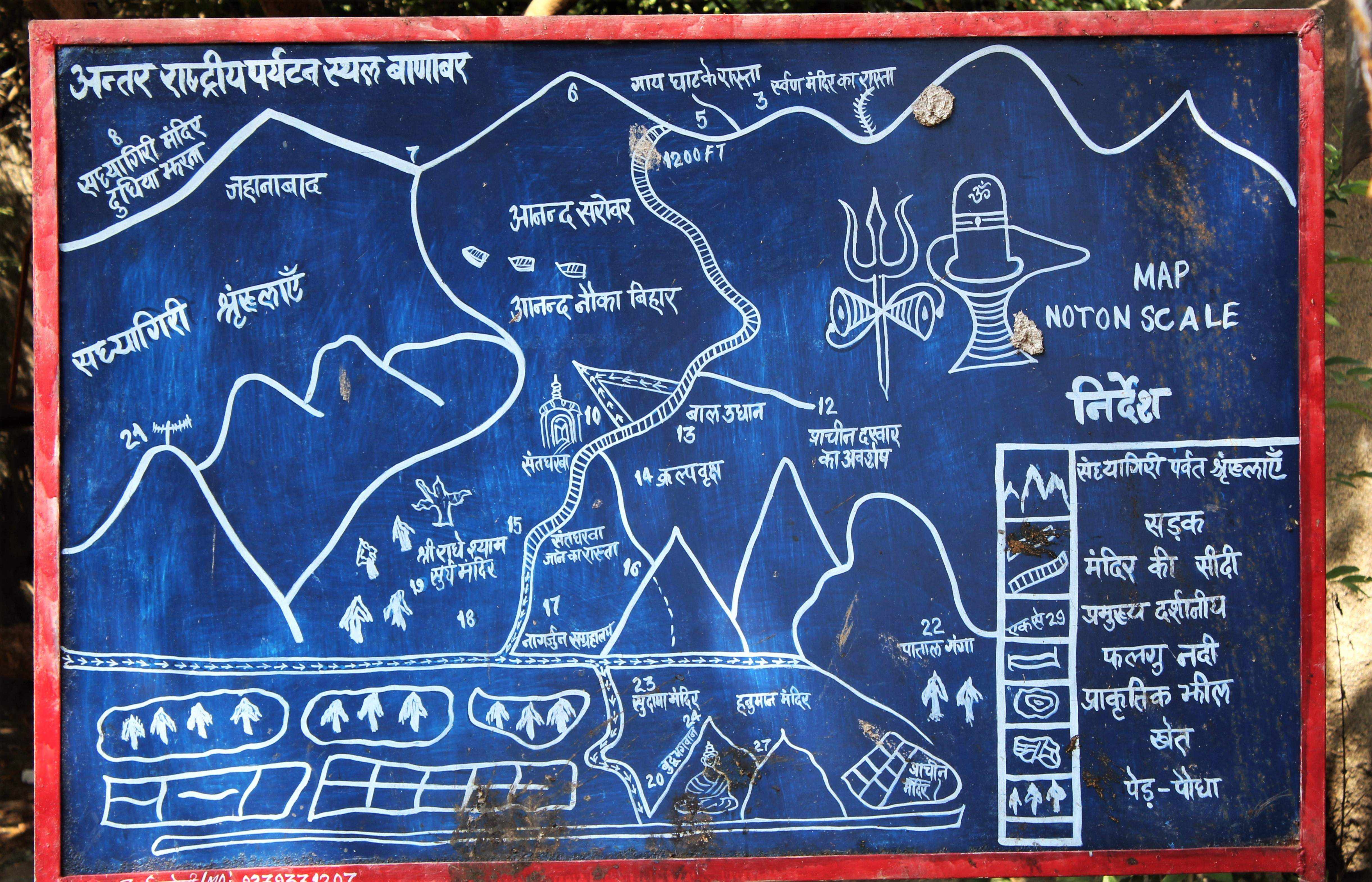
WHO WERE THE AJIVIKAS?
The origin of the Ajivika sect can be traced back to 5th century BCE. The religion once competed with Buddhism & Jainism for influence, only to lose out and get wiped off. Today everything including the texts of this faith have been lost. Makkhali Gosala, a contemporary of Gautama Buddha and Mahavira (the 24th Jain Tirthankara), is believed to be the founder of Ajivika faith (5th century BCE). Ancient texts depict Gosala as having been a disciple of Mahavira for a period of six years, after which the two had a falling out and parted ways. Under the patronage of the Nanda and Mauryan kings, the Ajivika faith flourished and reached its prominence in the late 1st century BCE. Then it had a sharp decline for some unknown reason. (However, as evidenced by inscriptions found in southern India, it continued to exist in south India until the 14th century CE).
Ajivikas belong to one of the Heterodox Philosophies or Nastika Darsana as they rejected conventional Vedic beliefs. Ajivikas believed that there was no free will and everything that has happened, is happening and will happen is entirely preordained and nothing could change it. This put the Ajivika philosophy in direct conflict with the ethics of a well-functioning society. This is because if we do not have free will then we cannot be held responsible for our actions and thus there is no ‘Karma’, meaning that there is no benefit for good behaviour and no penalty for bad behaviour. This fatalistic faith, however, had so many followers in those days and it became immensely popular. Such was the popularity that the Ajivikas were considered a serious threat to the contemporary religions including Buddhism during the 1st century BCE.
As already stated the Ajivika belief declined sharply and then vanished from the pages of history for some reason that remains largely unknown. However, conflict with other contemporary religions could be a plausible reason for the decline. The sect also lost royal patronage after the collapse of Mauryan empire. According to 2nd century CE text Ashokavadana, Ajivikas even enraged Emperor Ashoka by depicting Gautama Buddha in a negative light. Ashokavadana mentions that Ashoka’s father Emperor Bindusara, his chief queen Shubhadrangi, several members of the Maurya family and Ashoka himself in his early days were believers of Ajivika philosophy. Ashoka, however, adopted Buddhism at a later stage. Ashokavadana mentions that Ashoka, enraged at a picture that depicted Gautama Buddha in a negative light, issued an order to kill all the Ajivikas in Pundravardhana. Around 18000 followers of the Ajivika sect were supposedly executed. The event, however, could be mythical. Whatsoever, after the fall of the Ajivikas, the Barabar Hill caves dedicated to them were occupied by Buddhist and Jain monks.
THE BARABAR HILL CAVES
The first cave that we see on our left-hand side after climbing the steps of Barabar Hill is named as Karan Chaupar Cave.
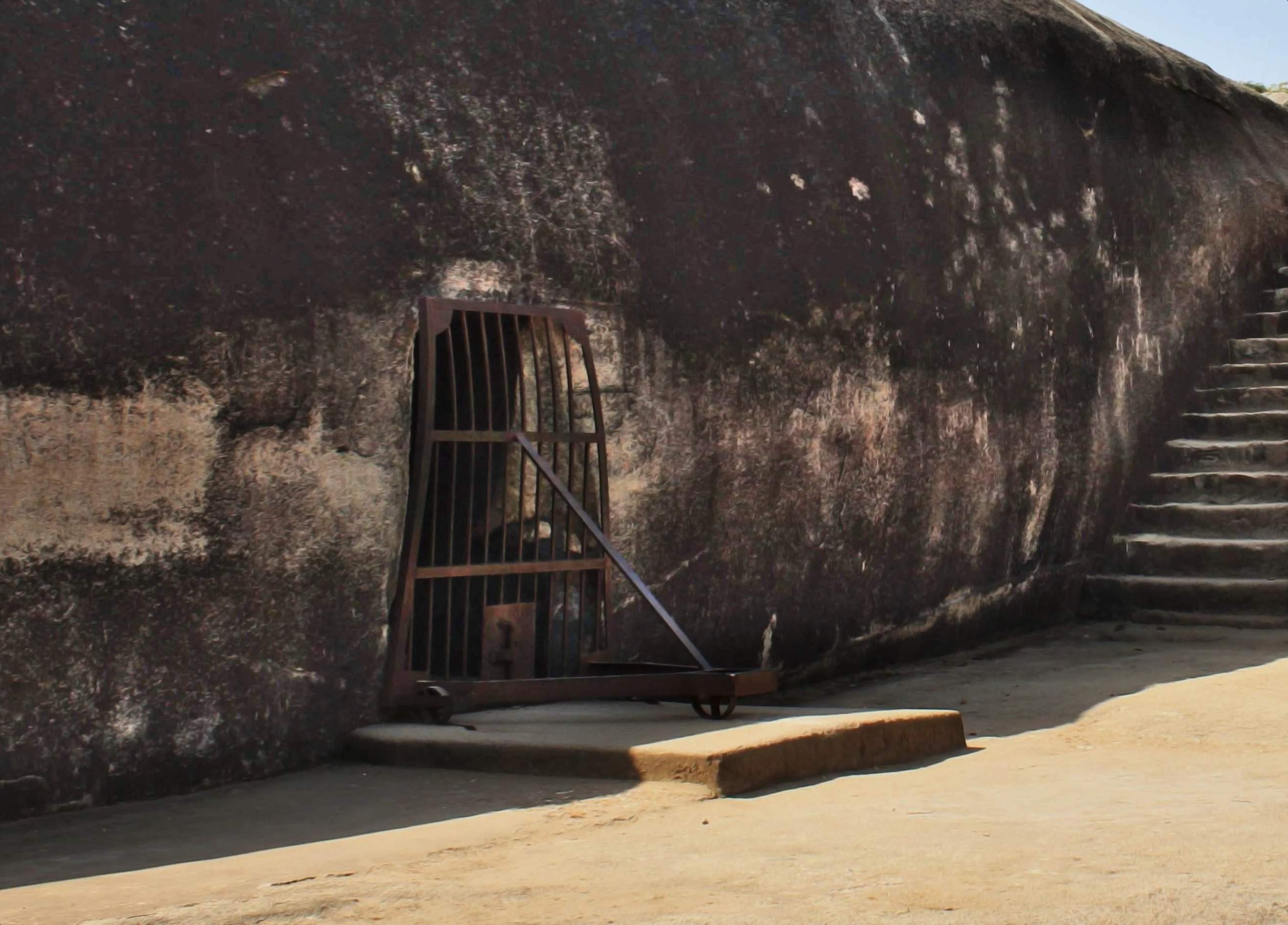
The Karan Chaupar Cave consists of a single rectangular room (10.2m x 4.27m) with highly polished walls. Towards the entrance there is a 3rd century BCE inscription of Emperor Ashoka in Brahmi script. The inscription speaks of the Buddhist practice of retirement (Vassavasa) during the monsoons. The inscription is translated as:
“In my 19th year of reign, I, King Priyadarsin, offer this cave of the very pleasant mountain of Khalatika, to serve as shelter during the rainy season.”
There is a Swastika and upward arrow symbol at the end of the inscription.
From Karan Chaupar Cave, you have to move to the opposite side of the hill to see the Sudama Cave and Lomas Rishi Cave, located one after the other. First comes the Sudama Cave, which is on the left-hand side of Lomas Rishi Cave.
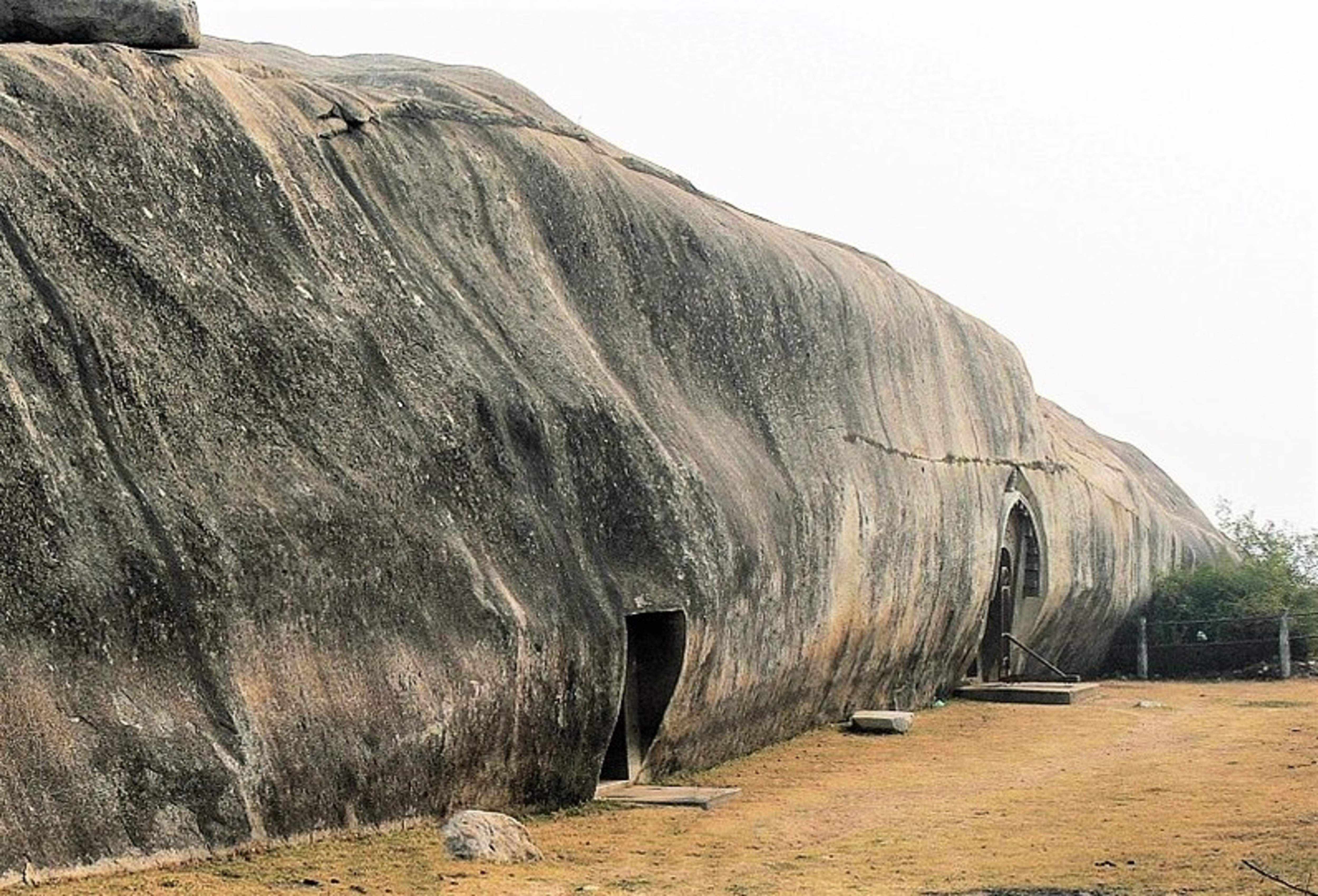
Sudama Cave: According to the inscriptions, this is the oldest cave of the series and was dedicated by Emperor Ashoka to the Ajivikas in 257 BCE (12th year of his reign). The Ashokan inscription reads:
“By King Priyadarsin, in the 12th year of reign, this cave of Banyans is offered to the Ajivikas”
The cave consists of two chambers: one rectangular (9.98m x 5.94m) room and a semi-hemispherical room (6m dia) connected by a narrow passage. The interior walls are highly polished and create a mirror effect. The surfaces also reverberate sounds, creating a long-lasting echo effect. This phenomenon is evident in all of the four caves, probably, created to produce amplifying effect during the prayers / songs of the Buddhist monks.
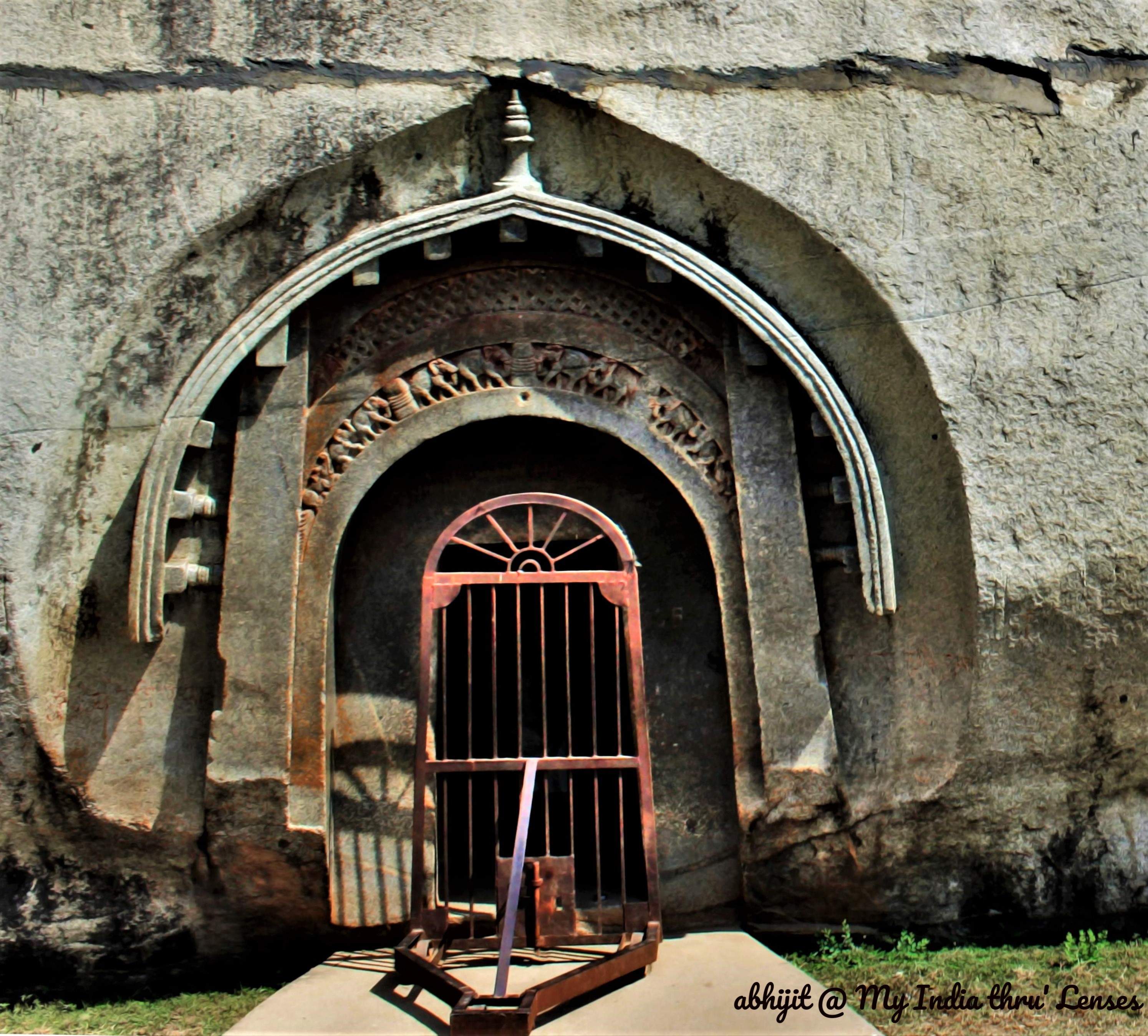
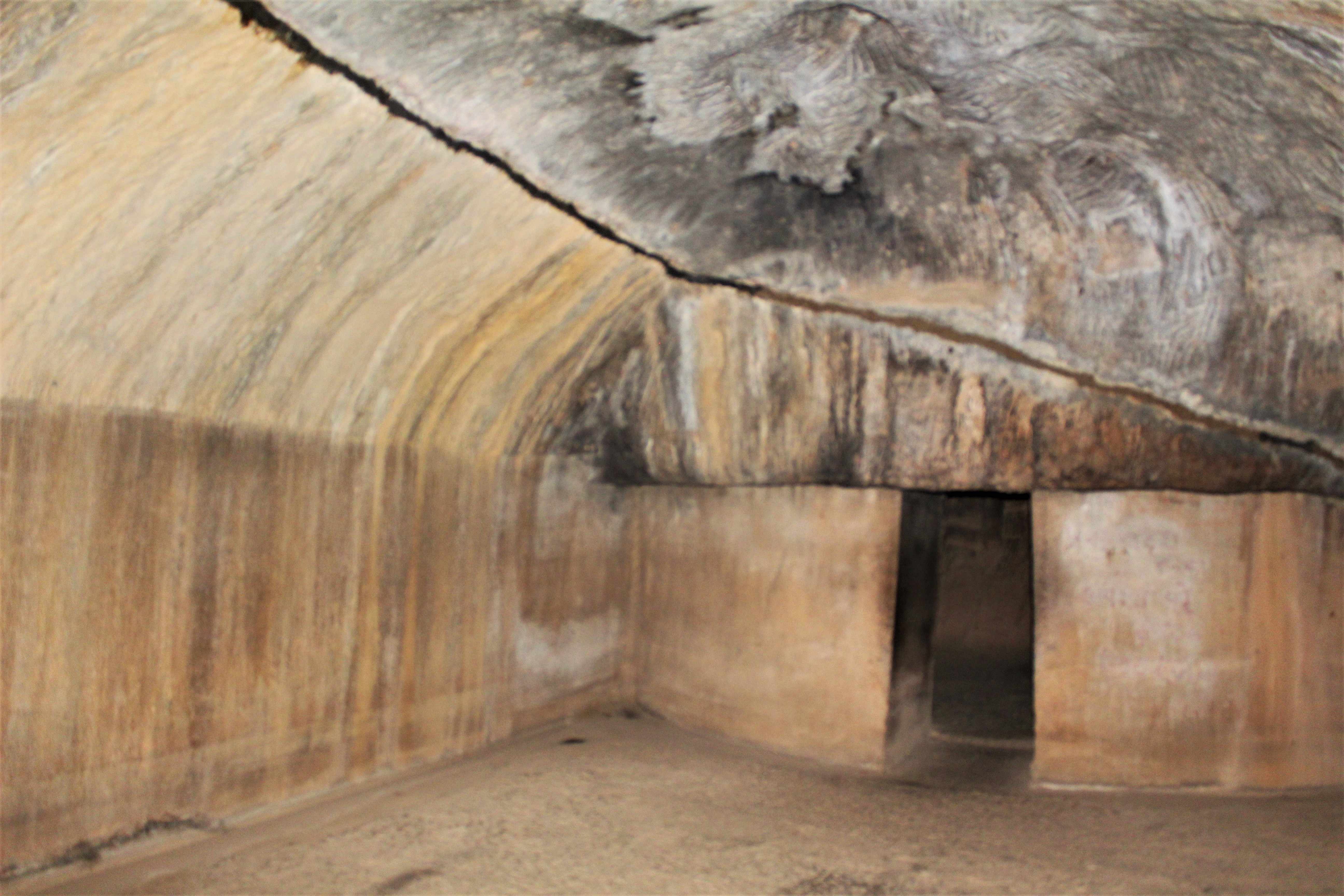
Lomas Rishi Cave: Adjacent and to the right side of Sudama Cave, is the Lomas Rishi Cave. This is again a two-room cave: one rectangular (9.86m x 5.18m) room and a semi-hemispherical room (5m dia) connected by a narrow passage. The cave has an elaborately-decorated entrance consisting of a row of elephants, nicely carved. The architecture used on the entrance door characterise the form of the Chandrashala or the Chaitya arch, a feature that can be seen in many Ancient temples and caves including the Ajanta Caves. Interestingly, the Lomas Rishi cave has no inscription. According to some, this suggests that the cave was never completed, probably due to persistent structural rock slide problems. Others argue that consecration of a cave was not necessarily used to be done after completion of the cave. Thus, it can’t be concluded as an incomplete cave. As per them, the cave was constructed towards the end of the Mauryan Empire, probably under the reign of the last Emperor, and thus halted after his assassination.
(The last ruler of Mauryan Empire was Brihadratha, who was assassinated in 185 BCE by the General of Mauryan Army, Pushyamitra Sunga, who founded Sunga dynasty.)
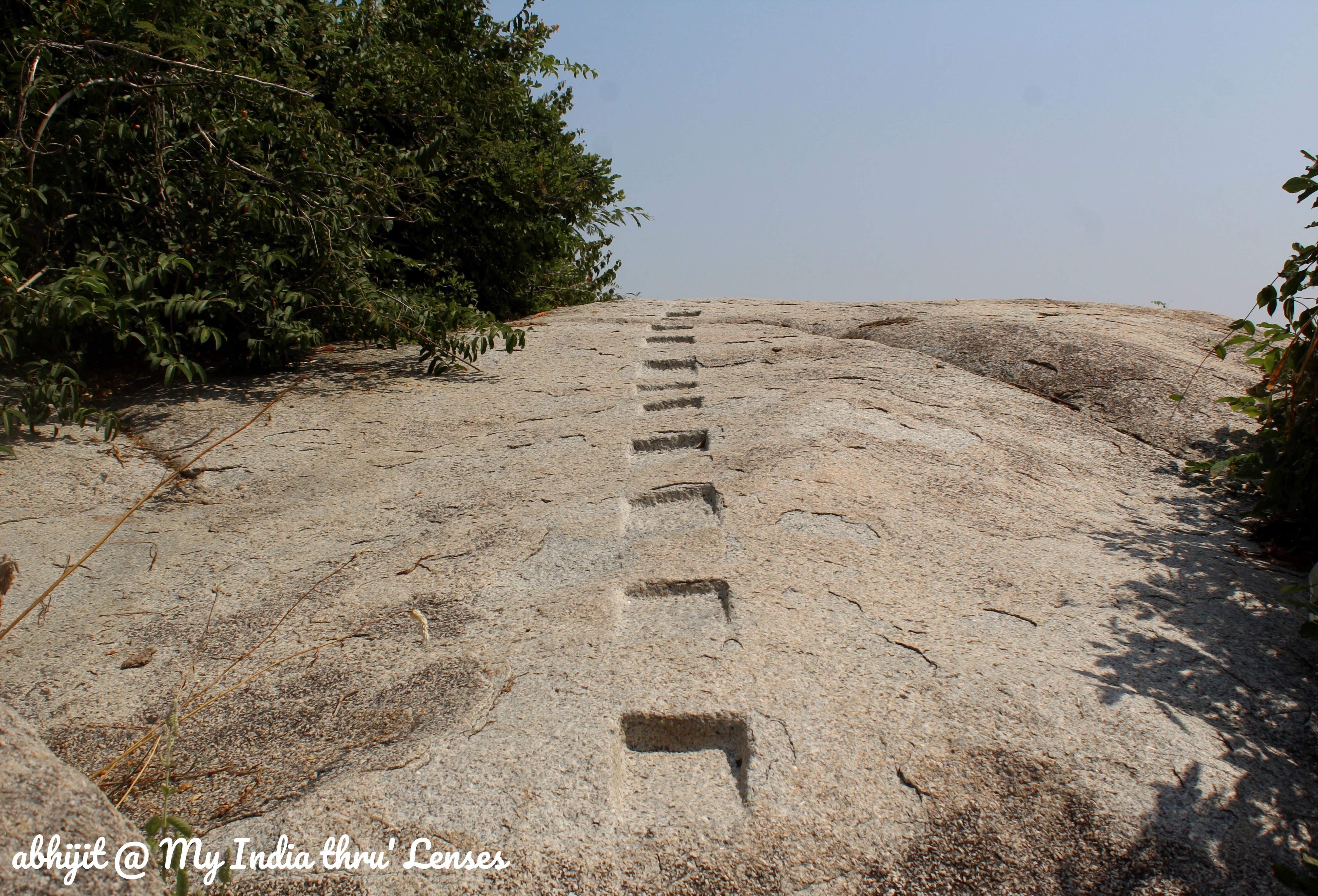
Vishwakarma Cave (aka Vishwamitra Cave): This cave is at a certain distance from the others and you have to walk around 150m or so towards the east to reach the cave. While you have to move upwards through the massive rocks, no need to worry as there are “Ashokan Steps” to help you. These steps are carved into the solid granite rocks to help people reach the Vishwakarma Cave. Many believe that these steps were carved during the Mauryan era, but the fact is highly debatable. The cave consists of one rectangular (4.27m x 2.54m) room and an unfinished semi-hemispherical room (2.8m dia) connected by a narrow trapezoidal passage. This cave is unfinished, but bears the inscription of Ashoka, similar to that of Sudama Cave:
“By King Priyadarsin, in the 12th year of reign, this cave of Khalatika Mountain is offered to the Ajivikas”
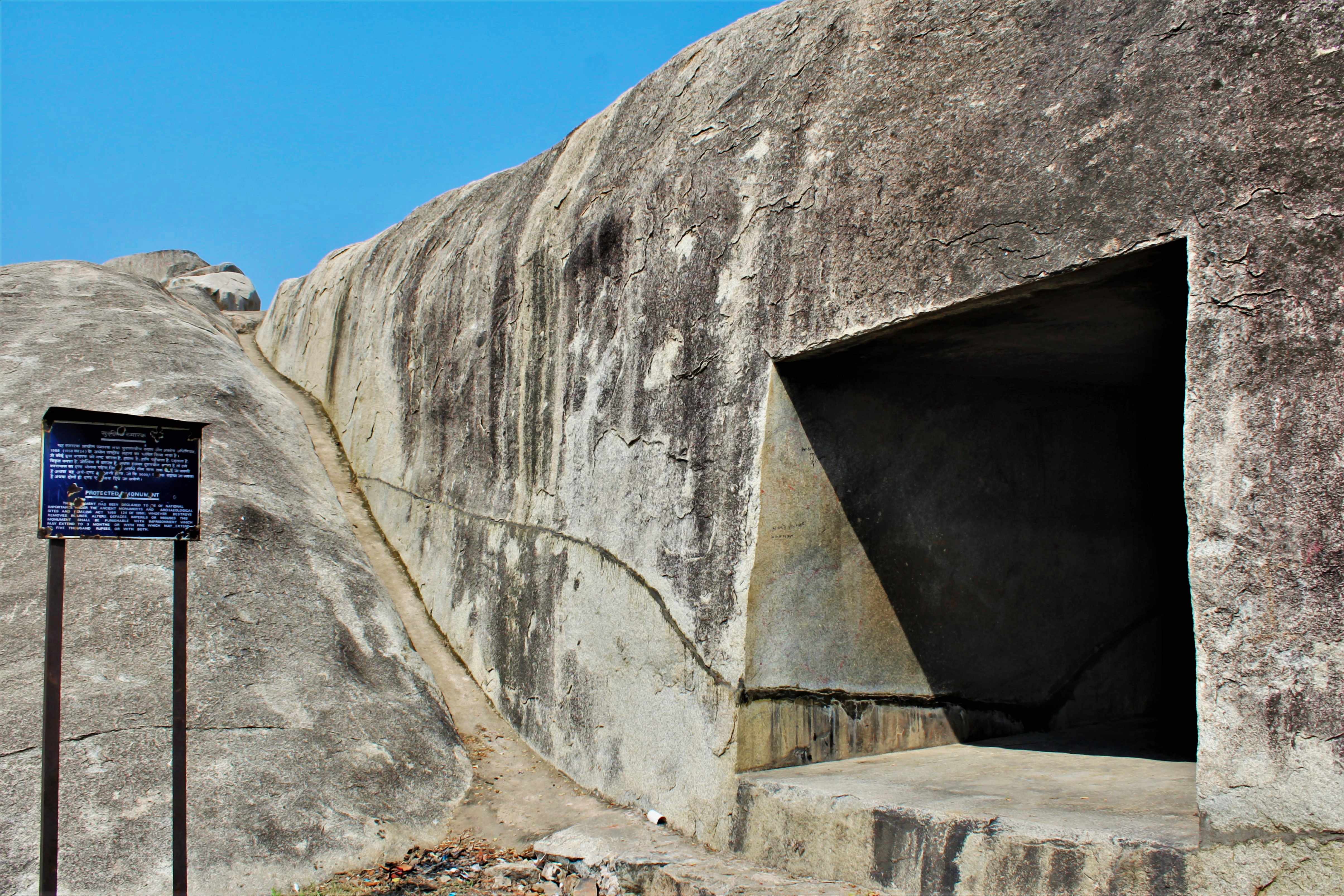
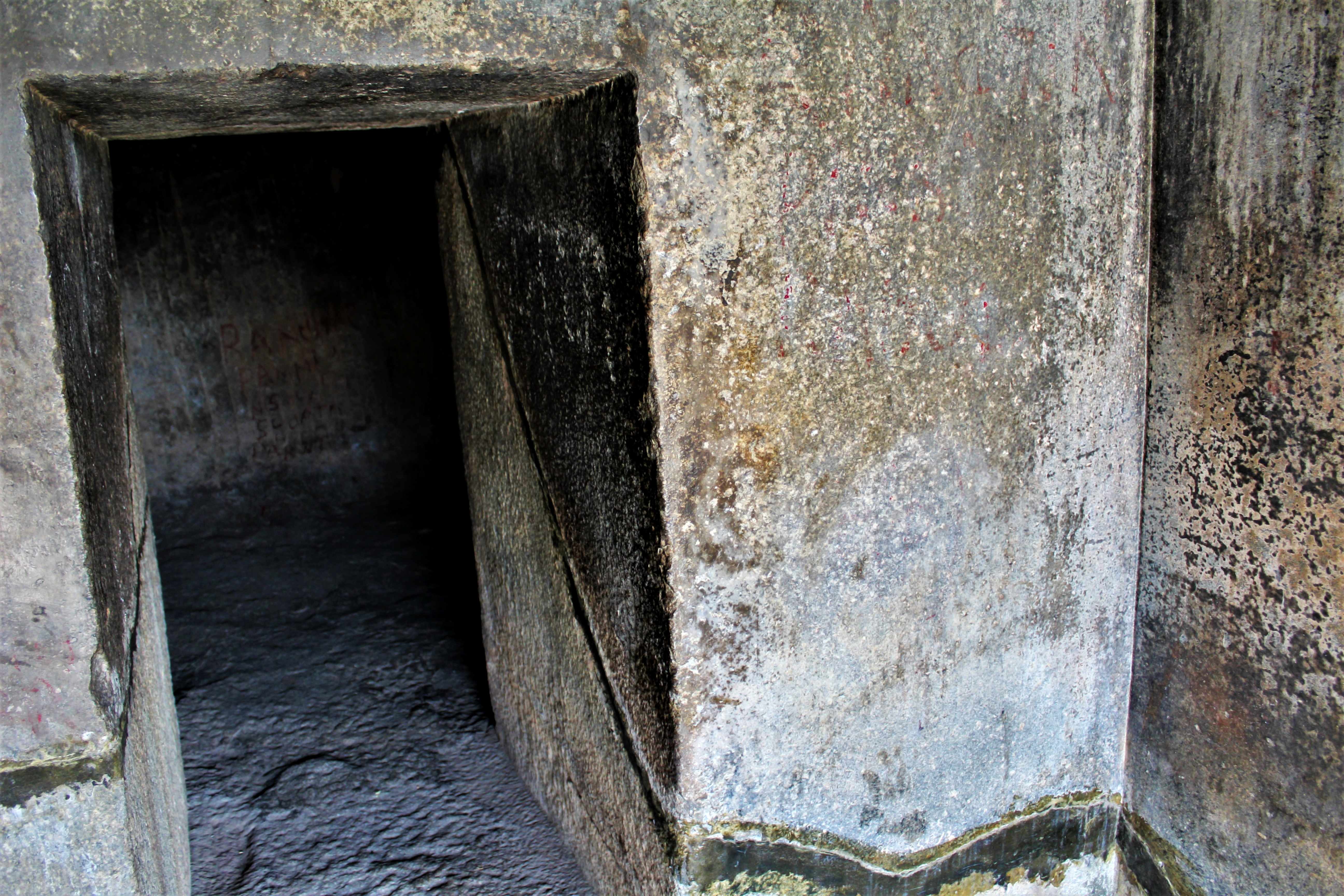
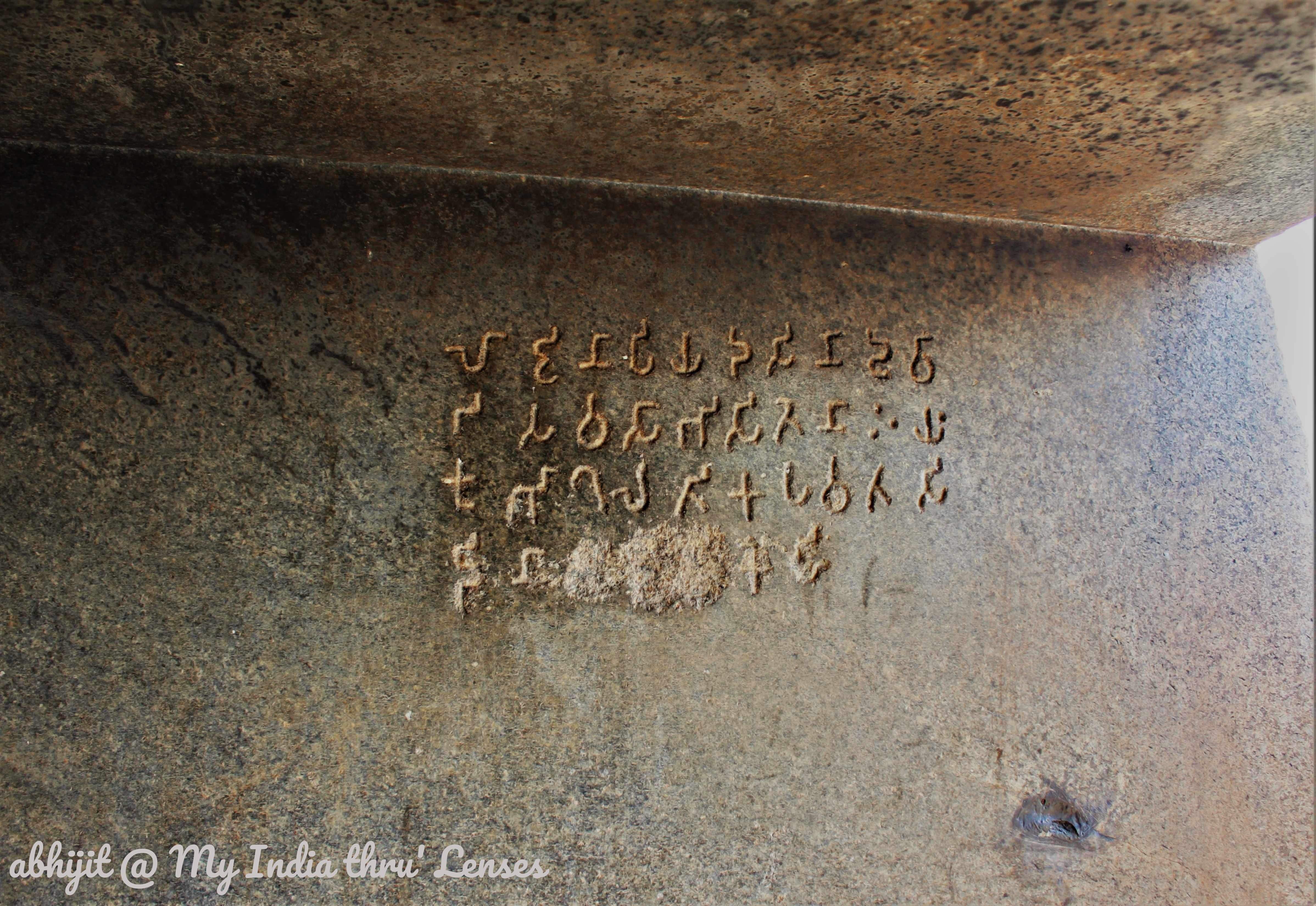
Dedicatory inscription of Ashoka in Vishwakarma/Vishwamitra cave, Barabar. The word "Ajivikas" was later attacked with chisels probably by any rival religion, at a time when the Brahmi script was still understood (before the 5th century)
We could not visit the 3 caves of Nagarjuni Hill for time constraints. There is also a Shiva temple on the top of the hill across the Barabar Hill, where lot of people visit during Shivaratri and a month-long fair is hosted. If you are having a trip to Rajgir / Nalanda / Bodhgaya or travelling in and around Patna, then it is worth a small detour to visit the age-old Barabar Caves that bear the history of the Mauryan Empire, Emperor Ashoka and the lost Ajivika sect.

INFO SOURCE
- Wikipedia
- Encyclopaedia Britannica
- History & Doctrines of The Ajivikas, A vanished Indian Religion, A.L. Basham
Photographs, unless otherwise credited, are self captured